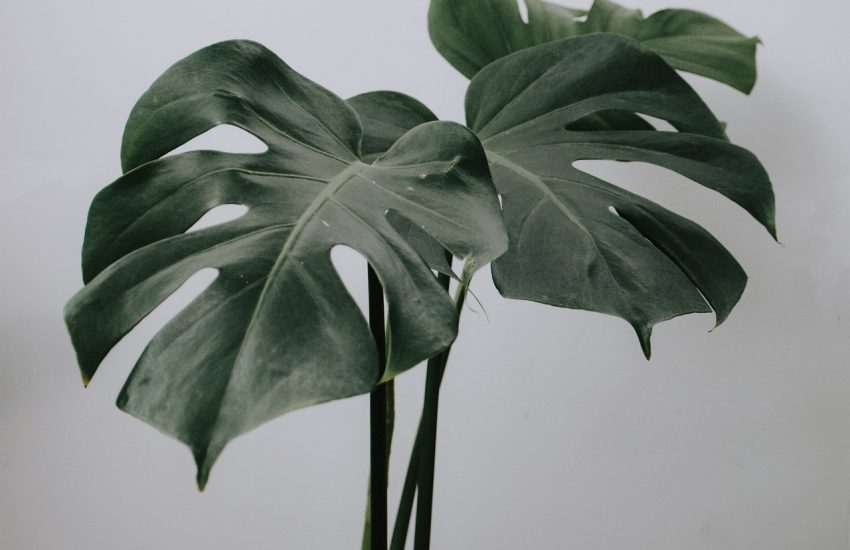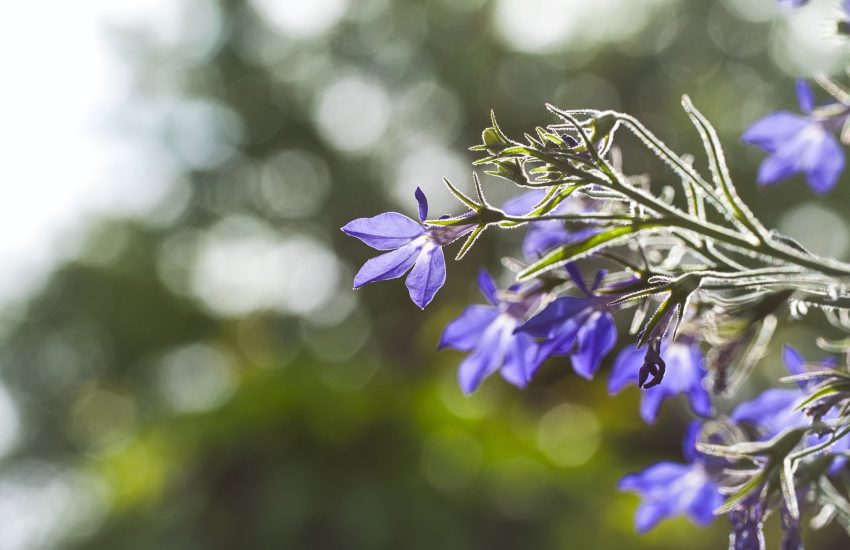Best Ground Cover Plants for Minnesota Suitable for Cold Climates and Low Maintenance Gardens
Choosing the best ground cover plants for Minnesota means thinking about those brutal winters and unpredictable growing conditions. Plenty of plants just can’t deal with the cold, so picking tough, hardy varieties is a must if you want your garden to actually survive.
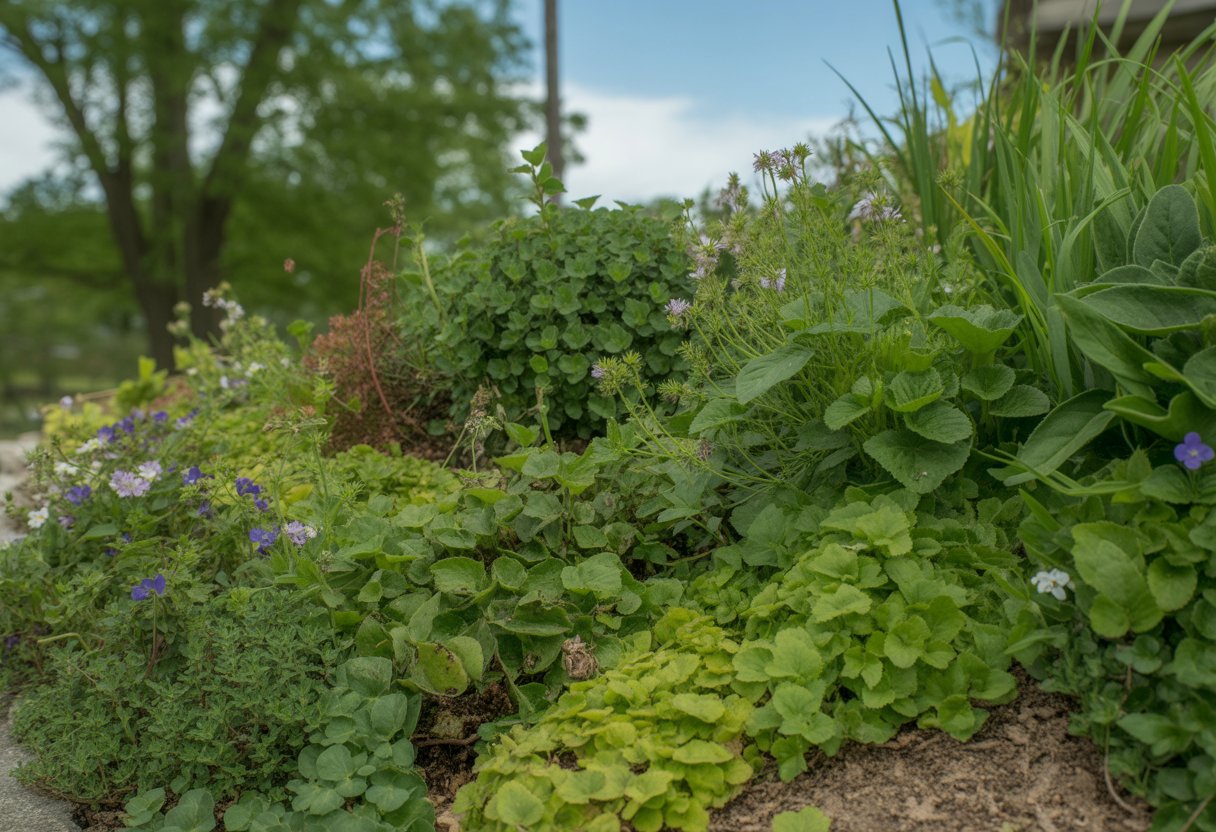
Low-maintenance, cold-tolerant plants like Creeping Thyme, Bearberry, and Ajuga really shine in Minnesota gardens. Not only do they cover ground, but they help stop soil erosion, keep weeds down, and make your yard look good all season.
If you want ground covers you can trust, look for species that handle shade, drought, and freezing temps. Knowing which plants have those traits helps you build a landscape that actually lasts up here.
Best Ground Cover Plants for Minnesota Gardens
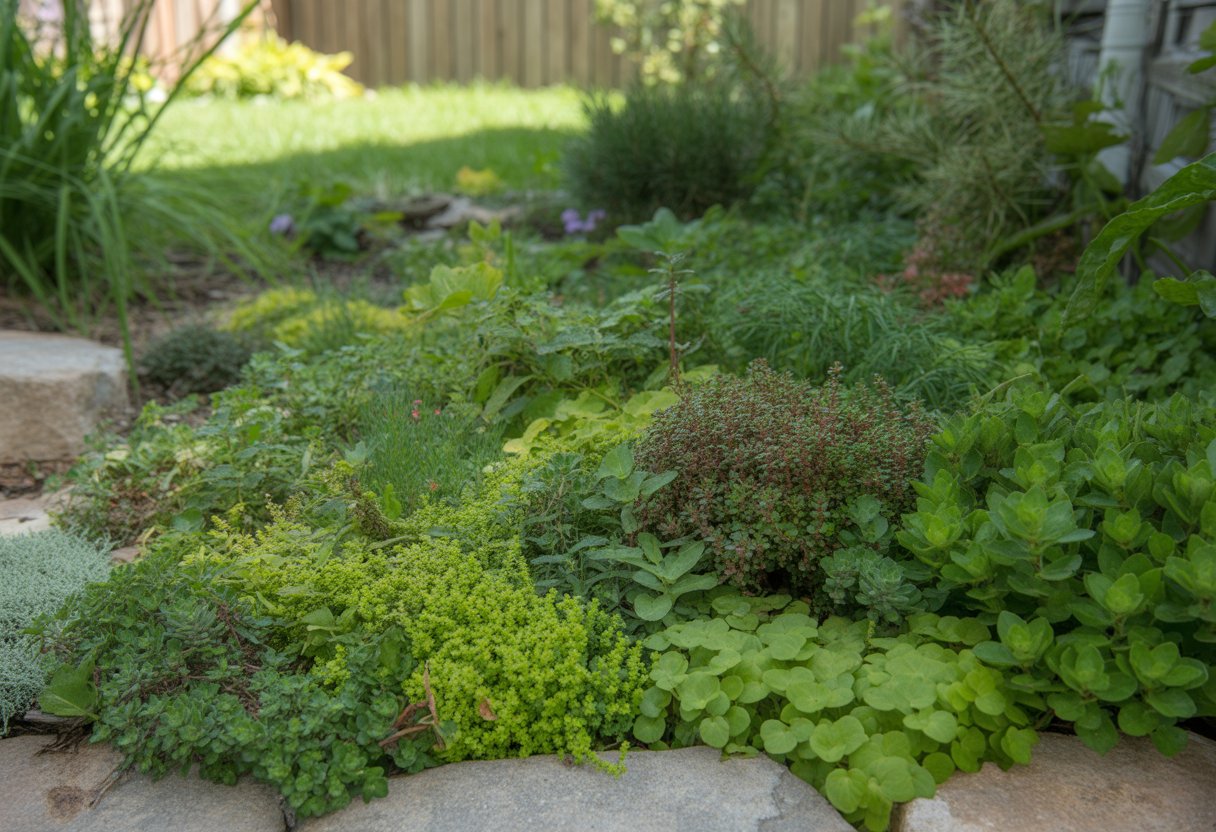
When you pick groundcovers for Minnesota, focus on cold tolerance, native species, and how easy they are to care for. Each one of those things can make or break your garden, especially when winter hits or you forget to water for a week.
Top Cold-Hardy Groundcovers
Plants here need to survive those wild Minnesota winters. Creeping Juniper (Juniperus horizontalis) and Bearberry (Arctostaphylos uva-ursi) both handle the cold well, staying evergreen or at least semi-evergreen.
Vinca minor (periwinkle) and Ajuga reptans (bugleweed) also make it through cold snaps, spreading out with nice-looking foliage and some seasonal flowers. If you want your soil protected all year, cold-hardiness is non-negotiable.
Native Ground Covers for Minnesota
Native plants just get Minnesota—they need less water and fertilizer, and they’re good for the local ecosystem. Wild Ginger (Asarum canadense) does great in shade, fills in thickly, and even helps out pollinators.
Pasque Flower (Anemone patens) and Prairie Smoke (Geum triflorum) bring color and texture, plus they support local wildlife. Natives tend to fit right in without taking over, which is honestly a relief.
Low-Maintenance Choices
If you want to spend less time fussing in the yard, low-maintenance groundcovers are the way to go. Sedum varieties like Sedum spurium don’t mind poor soil or dry spells and barely need watering once they’re settled.
Lamium maculatum (dead nettle) thrives in shade with almost no attention and does a solid job holding soil in place. These kinds of plants keep your garden looking tidy without stealing your weekends.
Planting and Growing Tips for Success
Getting ground cover plants established in Minnesota takes some prep and a bit of care. Keep an eye on soil conditions, plant at the right time, and don’t forget about water and nutrients.
Soil Preparation and Site Selection
Ground covers do best in well-drained soil that isn’t too rich or too poor. Before you plant, yank out the weeds and loosen the soil at least 6-8 inches deep.
Mix in some compost to help the soil hold moisture and stay loose. Pick your spot based on how much sun your plants need.
Most ground covers here like partial to full sun, but a few, like pachysandra, can handle shade. Stay away from areas with heavy clay or soggy soil unless you fix the drainage first.
A soil pH between 6.0 and 7.0 works for most ground covers. Take a soil test in early spring and adjust with lime or sulfur if you need to.
Timing and Planting Methods
Late spring to early summer is the sweet spot for planting ground cover in Minnesota, after the last frost is gone. That way, plants have time to establish before winter rolls in.
Plant in groups or rows, leaving enough space for them to spread but not so much that weeds take over. Usually, 6-12 inches apart is about right.
Transplants or plugs give you faster coverage than seeds. Right after planting, water thoroughly and add a thin layer of mulch to lock in moisture and keep weeds down.
Watering and Fertilization Needs
New ground covers need steady moisture for the first month or so. Water deeply once or twice a week, but adjust if it rains or your soil is sandy.
Once plants are established, most can handle dry periods, but they’ll look better with an occasional drink during droughts. Fertilize in early spring with a balanced, slow-release fertilizer like 10-10-10.
Don’t go overboard—too much fertilizer leads to floppy growth and weak roots. If you feel like your plants need a boost, one more feeding in midsummer does the trick.
Seasonal Care and Maintenance
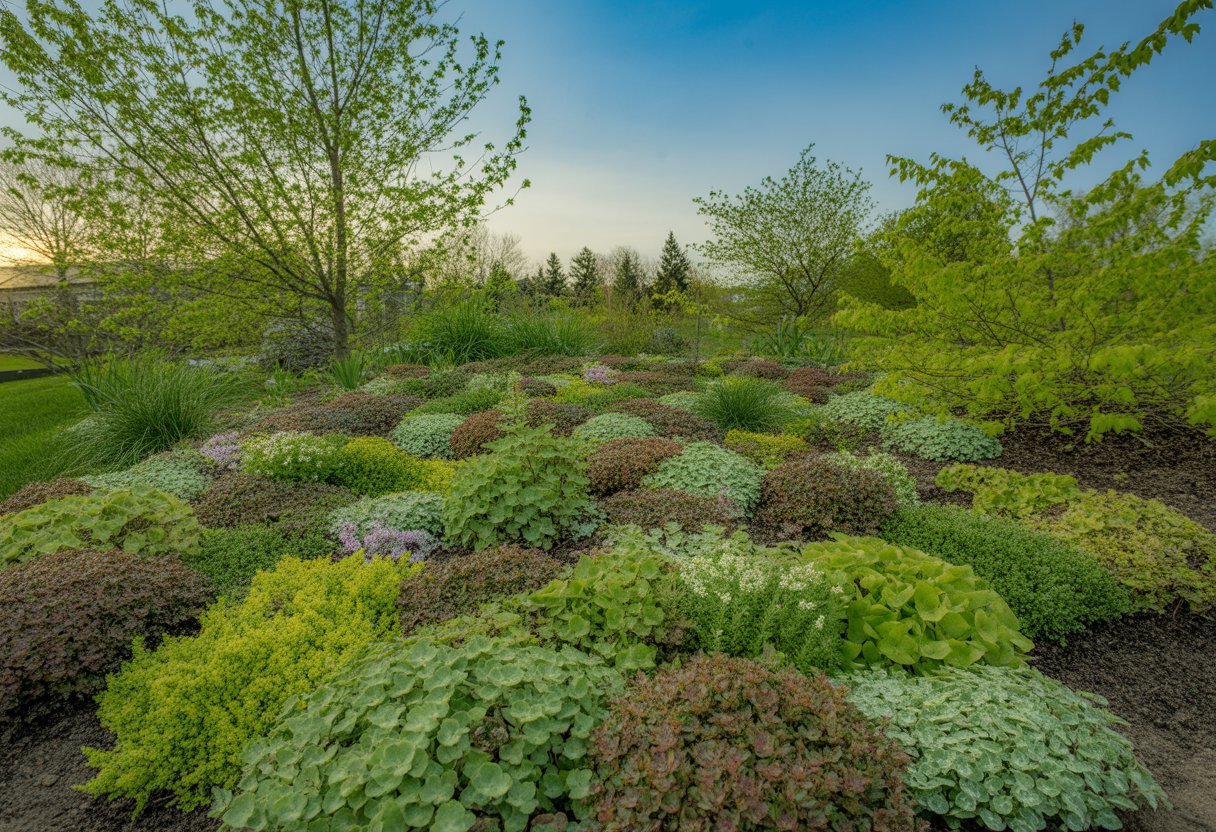
Seasonal care is what keeps ground cover plants healthy through Minnesota’s wild swings in weather. You’ll need to manage soil, fight weeds, and prep for winter.
Mulching and Weed Control
Mulch helps your soil stay moist and keeps temperatures steady. Spread 2-3 inches of organic mulch—shredded bark or compost—in early spring for best results.
Weeds steal water and food, so pull them as soon as you spot them. For bigger areas, you might try a pre-emergent herbicide made for ground covers, but go easy to avoid harming your plants.
Check for weeds regularly during the growing season. Top off your mulch each year to keep it working and stop new weed seeds from sprouting.
Pruning and Dividing
Pruning keeps ground covers dense and tidy. Trim lightly after flowering to get rid of dead stems and improve air flow.
Divide clumping ground covers every few years to perk them up and spread them around. Early spring, before new growth starts, is the best time.
Use a sharp spade to split the root ball into sections with a few shoots each. Replant them right away and give them a good drink. Dividing also keeps things from getting crowded.
Winter Protection Strategies
Minnesota winters are no joke, so winter protection matters. Put down mulch in late fall to insulate roots.
Try not to walk on your ground covers in winter—it can crush them. For plants that are a bit touchy, burlap screens or row covers can help block wind and frost.
Cutting back dead foliage in late fall lowers the risk of disease, but leaving some leaf litter gives extra insulation and shelter for critters. With the right winter care, your plants bounce back strong in spring.
Design Ideas and Landscape Uses
Ground cover plants do a lot more than just fill space. In Minnesota, they help stop erosion, block weeds, and make your garden look way more interesting.
Pick the right ones, and you can create layers, add texture, and get color throughout the year. Sometimes, it’s the little details that make the biggest difference.
Creating Year-Round Visual Interest
Ground covers like Ajuga and Vinca minor stay green even when everything else looks dead in winter. When spring finally shows up, early bloomers like Creeping phlox bring a burst of color.
Mixing ground covers of different heights and textures creates cool borders and winding paths. Pairing low sedum with taller perennials adds variety and keeps things from feeling too uniform.
If you ask me, combining contrasting leaves and flowers is what really makes a garden pop—especially when you’re stuck staring at snow half the year.
Ground Covers for Shade vs. Sun
Sun-exposed areas call for drought-tolerant varieties like Sedum and Creeping thyme. These plants just love Minnesota’s summer sun, and honestly, they make life easier by cutting down on maintenance.
They also help keep soil in place, which is always a bonus.
For those shady spots beneath trees or along a building’s foundation, shade-loving ground covers step up. Pachysandra and Sweet woodruff handle shifting moisture and do a solid job at suppressing weeds.
They bring some much-needed greenery to those dim, overlooked corners.
| Condition | Recommended Ground Covers | Benefits |
|---|---|---|
| Full Sun | Sedum, Creeping thyme, Ajuga | Drought-resistant, colorful flowers |
| Partial Shade | Vinca minor, Sweet woodruff, Pachysandra | Tolerate low light, dense foliage |

